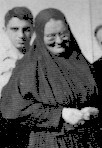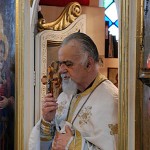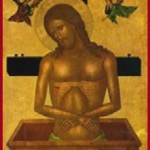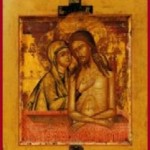


Father George Bithos' weblog


PASCHA 2009

Chapters 7 and 8 of Behr-Sigel’s essays centre on the central theme of Mme. Sigel’s life, the issue of women and men in the Church. As these chapters are read, it must be pointed out that the essays were written for the most part in the 1980’s and 1990’s. The reason I call this to the mind of readers is that at that time this topic was being encouraged by the general trends in ecumenical and theological scenes world-wide. Unfortunately, the extension of this movement, a more significant role for women in the Church, led to a relativism that opened the door for the current and more difficult issue within the contemporary ecumenical setting. The newest difficulty for the Orthodox is the problem of the role of practicing homosexuals, be it their “marriage” or ordination.
The injustice is that this current development has pushed aside the valid concern of the role of women. This issue is a topic that must be faced with thoughtful study and consideration. Behr-Sigel introduces her approach to this topic with a discussion of the question of Holy Tradition vs. common tradition. This inquiry is tantamount to the consideration of the conversation about women and the Church. What is true Tradition and what is custom? Our Church is a Church of Living Tradition; from this Holy Deposit of truth springs all the teachings of the Church. The Bible, the dogmas, the teachings of the Holy Fathers and Mothers of our life as a people of God are all part of Holy Tradition. This Tradition is the sinew of faith. In addition, the life of the Church in history develops traditions with a little “t” which are the practices and customs which acculturate the Church in a time and place. There are times that these two traditions are confused. They are not only confused, but in an attempt to preserve essential Tradition, everything is zealously preserved even the non-essential. What is the true authority by which the Church is regulated? Within these two traditions, the ferment and question of the role of women becomes entangled. Did we not have women deaconesses within the Holy Tradition of our Church? Did we not see their diminished manifestation in the tradition (little t)? The Church of today must grapple with this question. Behr-Sigel asks the difficult questions, while witnessing to the process by which the Church is using to deal with these matters.The theological foundation which forms the backdrop of this conversation is the subject matter of the next few chapters.The beginning point is, of course, the example of Jesus and His relationship with women. The essay points out correctly Our Lord dealt with the person, not with groups. He encountered individual humans, not men or women, not colours or nationalities, nothing but a personal encounter with God was the reality of coming face to face with the Messiah. Behr-Sigel rightly calls to our attention that Jesus shattered the “tradition” of His time concerning with whom he “should” associate. Women, tax collectors, adulterers, prostitutes, Samaritans, lepers, those possessed by demons; none were taboo for the touch of the Master. These examples are telling us what is important is the person relationship with Christ, the encounter not the convention of society. Is this example borne out in the life of Church? What is the Tradition and what is tradition?
]]>  Today, I would like to talk about silence. As I was growing up, my parents always referred to the Friday before the Saturday of Lazarus – as the “Silence (oi koufi)”. I always thought this was because the Akathist had finished and there wasn’t a service that night. Ok, there was silence. Now, I look at this a bit more deeply. If you remember a few years ago, there was this movement to help young people make better decisions by using the question, “What would Jesus do?” As I recall, there were even little rubber bracelets with the letters “WWJD” on them. In this case this is the question that should be asked. The Gospel reading of the Raising of Lazarus, (John 11, 1 – 45) begins with Jesus apparently hesitating to go to his friend’s aid. Well, this supposed hesitation had a real purpose, for all to see the glory of God. How was this to be accomplished? Our Lord seemingly was blasé about Lazarus’s illness and rushing to his side. After staying put for two days, Jesus prepared to go to Bethany informing His disciples that Lazarus was dead. As Jesus encountered Martha and Mary, they expressed thoughts that we all feel at sometime, “if only.” They were sure that if only Jesus had been there Lazarus wouldn’t have died, but Jesus was silent and missing. For us to truly understand Jesus’ hesitation, we need to know a bit about the Jewish teaching concerning death. At day four, in the Jewish understanding, the soul left the body in other words the body was a cadaver, a corpse. So if Lazarus was a corpse, Jesus did not simply resuscitate him. As Jesus called forth Lazarus and Lazarus walked out of his tomb Christ created life from dead matter. The Creator God bestowed life on Lazarus. Christ is God and the silence of Lazarus’ tomb was shattered. To the assembled crowd this silence was deafening.]]>
Today, I would like to talk about silence. As I was growing up, my parents always referred to the Friday before the Saturday of Lazarus – as the “Silence (oi koufi)”. I always thought this was because the Akathist had finished and there wasn’t a service that night. Ok, there was silence. Now, I look at this a bit more deeply. If you remember a few years ago, there was this movement to help young people make better decisions by using the question, “What would Jesus do?” As I recall, there were even little rubber bracelets with the letters “WWJD” on them. In this case this is the question that should be asked. The Gospel reading of the Raising of Lazarus, (John 11, 1 – 45) begins with Jesus apparently hesitating to go to his friend’s aid. Well, this supposed hesitation had a real purpose, for all to see the glory of God. How was this to be accomplished? Our Lord seemingly was blasé about Lazarus’s illness and rushing to his side. After staying put for two days, Jesus prepared to go to Bethany informing His disciples that Lazarus was dead. As Jesus encountered Martha and Mary, they expressed thoughts that we all feel at sometime, “if only.” They were sure that if only Jesus had been there Lazarus wouldn’t have died, but Jesus was silent and missing. For us to truly understand Jesus’ hesitation, we need to know a bit about the Jewish teaching concerning death. At day four, in the Jewish understanding, the soul left the body in other words the body was a cadaver, a corpse. So if Lazarus was a corpse, Jesus did not simply resuscitate him. As Jesus called forth Lazarus and Lazarus walked out of his tomb Christ created life from dead matter. The Creator God bestowed life on Lazarus. Christ is God and the silence of Lazarus’ tomb was shattered. To the assembled crowd this silence was deafening.]]>
[/caption]
and being the servant of one’s neighbor in the world. Through his life and writings, we can see a Christian who does not cloister his faith, but makes faith alive in service to humanity. For Bukharev, a faith alive was one that had a social context to alleviate suffering in the earthly world. As Behr-Sigel says: “Bukharev’s approach was the integral connection between this ‘mystical theology’ and the concern for a compassionate, actively creative and transforming presence in the world.” The Monk in the City as Elisabeth titles her essay elucidates a life of service linked with a profound spiritual empting of one’s self to express the love of Christ. This theology expresses “worship of the living God through service to others” is evocative of the life of Mother Teresa of Calcutta.
The proceeding chapter focuses on the story of Mother Maria Skobtsova (1891-1945)a spiritual inheritor of the theology of Bukharev. Born in Latvia, her name in the world was Elisabeth Pilenko. She became a politically active Socialist in Russia around the time of the revolution; escaping to Paris with her husband. In Paris, she became involved with the Russian Students Movement and became friends with many of the Russian theological intelligentsia. Sergius Bulgakov became her father confessor. A theologian, poet and social worker she petitioned her bishop to take up the habit. She was professed and was given the monastic name Maria.
[caption id="attachment_332" align="alignright" width="102" caption="Mother Maria of Paris"] [/caption]
She strongly wished to continue a monasticism open to the world in the manner of Alexander Bukharev. In the 1930s she reached out to the suffering poor of Paris. A controversial socially active monasticism caused a scandal with more conservative church members, but Mother Maria endured. With the advent of World War II, Mother Maria and her friends reached out to help Jews hide and escape Nazi persecution. She was betrayed to the Germans and was put to death, taking the place of a young girl scheduled to die in the gas chambers. Her martyrdom took place in the last days of the war in Ravensbruck concentration camp; On January 18, 2004, the Holy Synod of the Ecumenical Patriarchate in Istanbul recognized Mother Maria Skobtsova as a saint along with her son Yuri, the priest who worked closely with her, Fr. Dimitri Klépinin, and her close friend and collaborator Ilya Fondaminsky. All four died in German concentration camps. On January 18, 2004, the Holy Synod of the Ecumenical Patriarchate in Istanbul recognized Mother Maria Skobtsova as a saint along with her son Yuri, the priest who worked closely with her, Fr. Dimitri Klépinin, and her close friend and collaborator Ilya Fondaminsky.]]>
[/caption]
She strongly wished to continue a monasticism open to the world in the manner of Alexander Bukharev. In the 1930s she reached out to the suffering poor of Paris. A controversial socially active monasticism caused a scandal with more conservative church members, but Mother Maria endured. With the advent of World War II, Mother Maria and her friends reached out to help Jews hide and escape Nazi persecution. She was betrayed to the Germans and was put to death, taking the place of a young girl scheduled to die in the gas chambers. Her martyrdom took place in the last days of the war in Ravensbruck concentration camp; On January 18, 2004, the Holy Synod of the Ecumenical Patriarchate in Istanbul recognized Mother Maria Skobtsova as a saint along with her son Yuri, the priest who worked closely with her, Fr. Dimitri Klépinin, and her close friend and collaborator Ilya Fondaminsky. All four died in German concentration camps. On January 18, 2004, the Holy Synod of the Ecumenical Patriarchate in Istanbul recognized Mother Maria Skobtsova as a saint along with her son Yuri, the priest who worked closely with her, Fr. Dimitri Klépinin, and her close friend and collaborator Ilya Fondaminsky.]]>
[/caption] As a young boy, I remember my dad, who was a priest, always placed the Holy Cross on a tray of bright yellow daffodils. This sign of spring and the promise of the coming of Pascha seemed enough when I was that age. Now, I don’t know! I am much older; life is much more complex. Our consumer society offers so many distractions and alternatives. In every Orthodox parish there is the increased availability of services during this period, but there is also all those other things that sidetrack us. It is so easy to say not tonight, not this morning, next time. So what should we do? I know you’re probably thinking … Here it comes – the scolding and the guilt trip. Actually no – because this year I am more at fault than most of you! Well, again, what do we do? I really don’t know. Last night, when I was trying to think how to structure this entry something came to me. Maybe, what I need is to quiet the clamor. The word that came to mind, which reminded me of St. Gregory Palamas, is hesychia, silence or quiet. This might be the time to sit down, shut the world out and let God speak to me and tell me how to fight the slump. What a novel idea listen, don’t think – don’t talk – just listen. As you probably guessed, the concept of not thinking and being quiet is difficult for me. I’ll let you know if it helps.]]>
Orthodoxy and Peace. Rightly, the beginning of this chapter deals with the liturgical aspect of peace. Even though it is not always emphasized, this should be the crux of any discussion of the theology of the Church. I once read a statement from a well known Orthodox theologian who endured the Communist repression of the Church in the last century. He said that Church was striped of all her riches, schools, and influence; as long as the Liturgy was served, the Church would survive. This was the reality of persecuted Orthodoxy; liturgy is the heart of the Church and fed the soul of the faithful. Behr-Sigel chose to begin her essay with this observation. She points out the central place of peace within the Divine Liturgy. The deacon begins the Great Litany asking that “peace” be the entire bearing of the participants in the liturgy.
[caption id="attachment_313" align="alignleft" width="150" caption="Peace Unto All"] [/caption]
The priest blesses and calls for “peace for the congregants and they respond asking for his spirit to be peaceful. Clergy exchange the Kiss of Peace. With the exception of the personal pronouns “we and us,” peace is the single most often used word in our liturgy. After focusing on the centrality of peace in the liturgy, Elisabeth then discusses the effect that nationalism and national identity influence the Church and its mission to strive for peace among nations. No doubt, complex geopolitical issues affect the closely knit church-state relations in many Orthodox countries. Behr-Sigel points out areas of concern to Orthodox peoples; Serbia (note the date of the article), Palestine, and the cooperation of Constantinople, Russia and the WCC and peace efforts. Never the less, the increased presence of Orthodoxy in the west should help provide a catalyst for a pan-orthodox peace movement. For further information link to the Orthodox Peace Fellowship (http://www.incommunion.org)
Chapter Four discusses a theological theme which is dear to my heart. The topic is the concept of kenosis.(see post Standing by) The scriptural heart of this principle is not only Philippians 2, 5-7 as pointed out in the essay, but also all of salvation history.
[caption id="attachment_319" align="alignright" width="150" caption="Extreme Humility"]
[/caption]
The priest blesses and calls for “peace for the congregants and they respond asking for his spirit to be peaceful. Clergy exchange the Kiss of Peace. With the exception of the personal pronouns “we and us,” peace is the single most often used word in our liturgy. After focusing on the centrality of peace in the liturgy, Elisabeth then discusses the effect that nationalism and national identity influence the Church and its mission to strive for peace among nations. No doubt, complex geopolitical issues affect the closely knit church-state relations in many Orthodox countries. Behr-Sigel points out areas of concern to Orthodox peoples; Serbia (note the date of the article), Palestine, and the cooperation of Constantinople, Russia and the WCC and peace efforts. Never the less, the increased presence of Orthodoxy in the west should help provide a catalyst for a pan-orthodox peace movement. For further information link to the Orthodox Peace Fellowship (http://www.incommunion.org)
Chapter Four discusses a theological theme which is dear to my heart. The topic is the concept of kenosis.(see post Standing by) The scriptural heart of this principle is not only Philippians 2, 5-7 as pointed out in the essay, but also all of salvation history.
[caption id="attachment_319" align="alignright" width="150" caption="Extreme Humility"] [/caption]
The kenosis of Our Lord is at the center of Orthodox theology. God humbling Himself to take on flesh, so that He could identify with us His creation is the essence of His salvific mission in obedience to the will of the Father. The hymns, poetry and art of the Church bear witness to this tenet. Behr-Sigel describes the prevalence of this concept in Russian theological thought and literature. The monastic vocation is a true reflection of this theological concept and has been since its inception in the Egyptian and Palestinian deserts. Modern Greek theologians Zizioulas, Nellas, and Vlachos; in addition to many familiar Russian theologians have written about this aspect of Orthodox theology. Dr. Behr-Sigel masterfully weaves the theme of kenosis and its imprint on the soul of Russia and her people.]]>
[/caption]
The kenosis of Our Lord is at the center of Orthodox theology. God humbling Himself to take on flesh, so that He could identify with us His creation is the essence of His salvific mission in obedience to the will of the Father. The hymns, poetry and art of the Church bear witness to this tenet. Behr-Sigel describes the prevalence of this concept in Russian theological thought and literature. The monastic vocation is a true reflection of this theological concept and has been since its inception in the Egyptian and Palestinian deserts. Modern Greek theologians Zizioulas, Nellas, and Vlachos; in addition to many familiar Russian theologians have written about this aspect of Orthodox theology. Dr. Behr-Sigel masterfully weaves the theme of kenosis and its imprint on the soul of Russia and her people.]]>
stavrotheotokion. If we look at this compound word and break it down to its component parts we can recognize a couple of fairly familiar Greek words, Stavro – Greek for cross and Theoto(kos), the Mother of God. Now, we can connect the concepts The Theotokos and the Cross. The Stavrotheotokion is a troparion (short hymn with a theme usually sung after a verse of psalm), which is a manifestation of true human emotion. It is a poetic expression of the pain, sorrow and astonishment of a mother beholding her Son and her God on the Cross. These verses of theology and tenderness are heard in many of the services of the Great Lent, but reach their zenith in the services of the Holy Passion. The Theotokos expresses the wonder of us all. The awe, which could only be articulated by a mother who has kept a secret for many years (“and his mother kept all these things in her heart” Luke 2, 51). The identity of her Son as the incarnate God was known the Theotokos since the Annunciation. Now she suffers a new mystery, the inscrutability of her Son and Creator taking on death by His own free choice. Each of these verses proclaims the truth of Christ’s condescension.
[caption id="attachment_299" align="alignleft" width="150" caption="The Lament of the Virgin"] [/caption]
[/caption]
…”Woe is me beloved Child, light of my eyes! Thou has hung the earth above the waters, how can you endure to be nailed upon the Tree between two evildoers.” – Vespers of Tuesday in the Third Week.
None the less, the Virgin stands by the cross, hour by hour true to her mission to intercede for the entire world. Her pain is palpable. Her lament is moving and yet there is true nobility in her devotion. When all the disciples, except John the Beloved, had fled because of their fear, she and the other women stood there unafraid. St. Romanos the Melodist has captured her grief and her consolation in a kontakion (a combination of troparia of the same structure, connect alphabetically or acrostically) used on Great and Holy Friday. This dialogue between the Theotokos and her Son becomes the revelation of God’s plan of salvation in poetry. This kontakion is lyrical theology, stavrotheotokion with the voice of response by our Crucified Lord. Christ assures the Theotokos just as she witnesses his hanging on the Cross, she would receive this grace. [caption id="attachment_302" align="alignright" width="91" caption="The Theotokos at the Cross"] [/caption]
“Courage, Mother because you will see me first on my coming first from the tombs. I am coming to show you by how many toils I ransomed Adam and how much I sweated for his sake. I shall show it to my friends by showing the marks in my hands and then you will see Eve, Mother, living as before, and you will cry out with joy: ‘He has saved my forebears, my Son and my God.’*
*(St. Romanos the Melodist. On the Life of Christ: Kontakia. Translated by Archimandrite Ephrem Lash. Edited by Kerry Brown, The Sacred Literature Series. New York et al.: HarperCollins Publishers, 1995, p. 148).]]>
[/caption]
“Courage, Mother because you will see me first on my coming first from the tombs. I am coming to show you by how many toils I ransomed Adam and how much I sweated for his sake. I shall show it to my friends by showing the marks in my hands and then you will see Eve, Mother, living as before, and you will cry out with joy: ‘He has saved my forebears, my Son and my God.’*
*(St. Romanos the Melodist. On the Life of Christ: Kontakia. Translated by Archimandrite Ephrem Lash. Edited by Kerry Brown, The Sacred Literature Series. New York et al.: HarperCollins Publishers, 1995, p. 148).]]>
Continuing this introduction to Mme. Behr-Sigel in chapter one she relates her journey to embrace the faith. I was struck how very similar her story was to so many of our fellow Orthodox in this country. Marriage to a member of the Church combined with study and the influence of church members all contributed to bring Dr. Behr-Sigel to Orthodoxy. As a noted member of the academy in France, Mme. Behr-Sigel brought a wealth experiences to the Church family. Additionally, she lived during the critical times of the two world wars and the turmoil within the Christian communities of Europe and the world as the result of the wars. The two great issues which incited fervor in Dr. Behr-Sigel were questions that, in my opinion, remain to be fully explored and more completely resolved. These concerns are the subject of the full participation of the royal priesthood, most especially women, in the Church and the question of how the Church responds to the challenges of modernity and its impact on the Church. These two great trials continue to confront us as the Church. It will be a voyage of discovery as we read this book. I read with great personal interest the second chapter of the book. These pages contain a reprint of an address Behr-Sigel gave at the Orthodox Theological Institute at Cambridge in 1998. The topic of Dr. Elizabeth’s lecture discussed the task of Orthodox Theological Formation. This talk was an opportunity to once again return to the two themes which animated Behr-Sigel, the role of women in the Church and modernity and the Church. If one reads the speech closely the call for Orthodox theological formation at a center of western learning was essential to equip future Church leaders to address issues facing us in this age. The Institute for Orthodox Christian Studies at Cambridge (http://www.iocs.cam.ac.uk/) has provided a fertile environment for teaching theology to the lay, academic, and pan-Orthodox peoples of Great Britain for over ten years. Ria and I have been privileged to benefit from many of the Institutes programs during our years in Britain. The vision of Dr. Behr-Sigel, expressed in her address, that the centre at Cambridge becomes a source of teaching Orthodox Tradition has been realized. Dn. George]]>